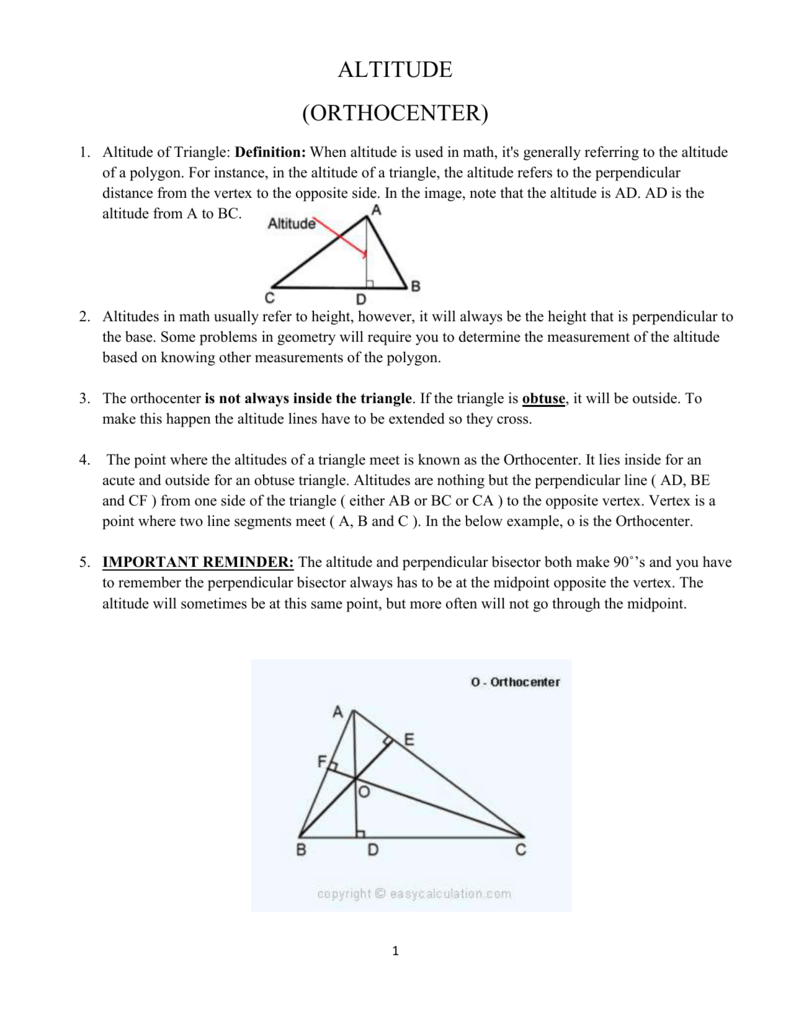

You also know what the Pythagorean Theorem is ( a 2 + b 2 = c 2) and how to prove it, and what the right triangle altitude theorem is (the altitude of a right triangle drawn to the hypotenuse c forms two similar right triangles that are also similar to the original right triangle) and how to prove it. Lesson SummaryĪfter going through the videos, reading the lesson and examining the pictures, you now know how to identify a right triangle (by its interior right angle), what its identifying property is (it has one interior right angle). Since each of the two smaller triangles are similar to the larger triangle, they are similar to each other. Here ∠ B D C = ∠ A C B, and ∠ D B C = ∠ A B C, so again, (by the AA postulate): Go through the figure again, concentrating on the larger, new triangle B C D. This means two angles of △ A D C and △ A B C are similar, making the triangles themselves similar (by the Angle-Angle postulate or AA postulate): You can prove this by seeing that new triangle's ∠ A D C = original triangle's ∠ A C B, while new triangle's ∠ C A D = original triangle's ∠ C A B. Each of these triangles is similar to the other triangle, and both are similar to the original triangle. The altitude divided ∠ C, and also created two right angles where it intersected hypotenuse c.Ĭall the point where the altitude h touches hypotenuse c point D. This altitude h creates two smaller triangles inside our original triangle. This puts ∠ A to the bottom left, and ∠ B to the bottom right.Ĭonstruct an altitude (or height) h from the interior right angle C to hypotenuse c (so it is perpendicular to c). The right triangle altitude theorem tells us that the altitude of a right triangle drawn to the hypotenuse c forms two similar right triangles that are also similar to the original right triangle.Ĭonstruct △ A B C so that hypotenuse c is horizontal and opposite right angle C, meaning legs a and b are intersecting above c to form the right angle C. Learn how to use the Pythagorean Theorem to calculate the length of one side of a right triangle. The sides opposite the complementary angles are the triangle's legs and are usually labeled a and b. The other two angles in a right triangle add to 90 ° they are complementary. Opposite it is the triangle's hypotenuse, the longest of the three sides, usually labeled c. We already know the square vertex of the right triangle is a right angle. '''Points and related utilities ''' from ctypes import cdouble from ctypes import cast, POINTER from shapely.errors import. "Right" refers to the Latin word rectus, meaning "upright." Hypotenuse and Sides of a Right Triangle The term "right" triangle may mislead you to think "left" or "wrong" triangles exist they do not. In drawing right triangles, the interior 90 ° angle is indicated with a little square □ in the vertex. When one of those interior angles measures 90 °, it is a right angle and the triangle is a right triangle. Prove the right triangle altitude theoremĪll triangles have interior angles adding to 180 °.Understand the identifying property of right triangles.Key thing here was remembering that constructing an altitude is the exact same process as constructing a perpendicular through a point to a line.After viewing the video, looking over the pictures, and reading the lesson, you will be able to: So now I can connect these, I’m going to label it as a right angle, and I’m going to create point D. We have a point down here and we have B and notice that it says line segment BD, so I’m going to make sure that this is going to end on that side AC.

So sharp end is going to be at B and I’m going to extend that a little bit more so I get two points of intersection okay actually it’s a little too much, so I’m going to swing an arc, so now we have our two points of intersection and I need to have, In have one point on this line that’s vertex B and I’m to swing one more arc from each of these end points, so here is one arc.Ĭome over to this point of intersection swing another arc and so now we have our two points. Start off my grabbing your compass and you want to swing an arc with your compass sharp end at B and we want to intersect this side AC twice.

To do this construction, we would swing an arc from that point, and then from each of these endpoints we would swing two more arcs and then we would connect these and we would have our perpendicular segment, so that’s what we’re going to do. So an idea of what we’re going to do here is to think of the vertex B as some point in space and we have this opposite side AC. So we’re starting at B and we’re going to some point D on this opposite side. So if I look at this triangle right here, we’re being asked to construct altitude BD, so that tells you the vertex that you’re going to. So in construction remember you’re only using two things a compass and a straightedge, but what is an altitude? Well we said our definition of an altitude is a perpendicular segment from a vertex to the line containing the opposite side. You’re probably going to be asked to construct an altitude in a triangle.


 0 kommentar(er)
0 kommentar(er)
